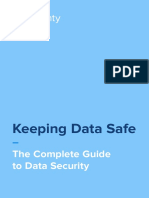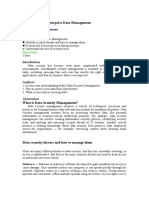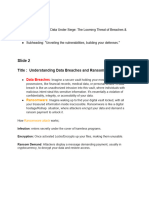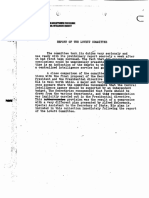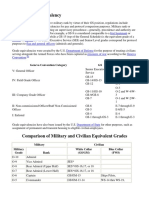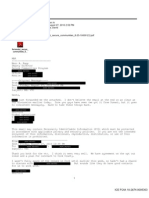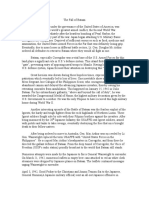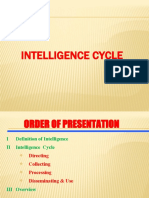0% found this document useful (0 votes)
3 views2 pagesPresentation For Data Security
The document outlines key elements for a data security presentation, emphasizing the importance of protecting data from various threats. It includes topics such as definitions, types of threats, best practices, and legal considerations. The presentation aims to educate individuals and organizations on the necessity of data security in the digital age.
Uploaded by
germana de oliveiraCopyright
© © All Rights Reserved
We take content rights seriously. If you suspect this is your content, claim it here.
Available Formats
Download as PDF, TXT or read online on Scribd
0% found this document useful (0 votes)
3 views2 pagesPresentation For Data Security
The document outlines key elements for a data security presentation, emphasizing the importance of protecting data from various threats. It includes topics such as definitions, types of threats, best practices, and legal considerations. The presentation aims to educate individuals and organizations on the necessity of data security in the digital age.
Uploaded by
germana de oliveiraCopyright
© © All Rights Reserved
We take content rights seriously. If you suspect this is your content, claim it here.
Available Formats
Download as PDF, TXT or read online on Scribd
/ 2























